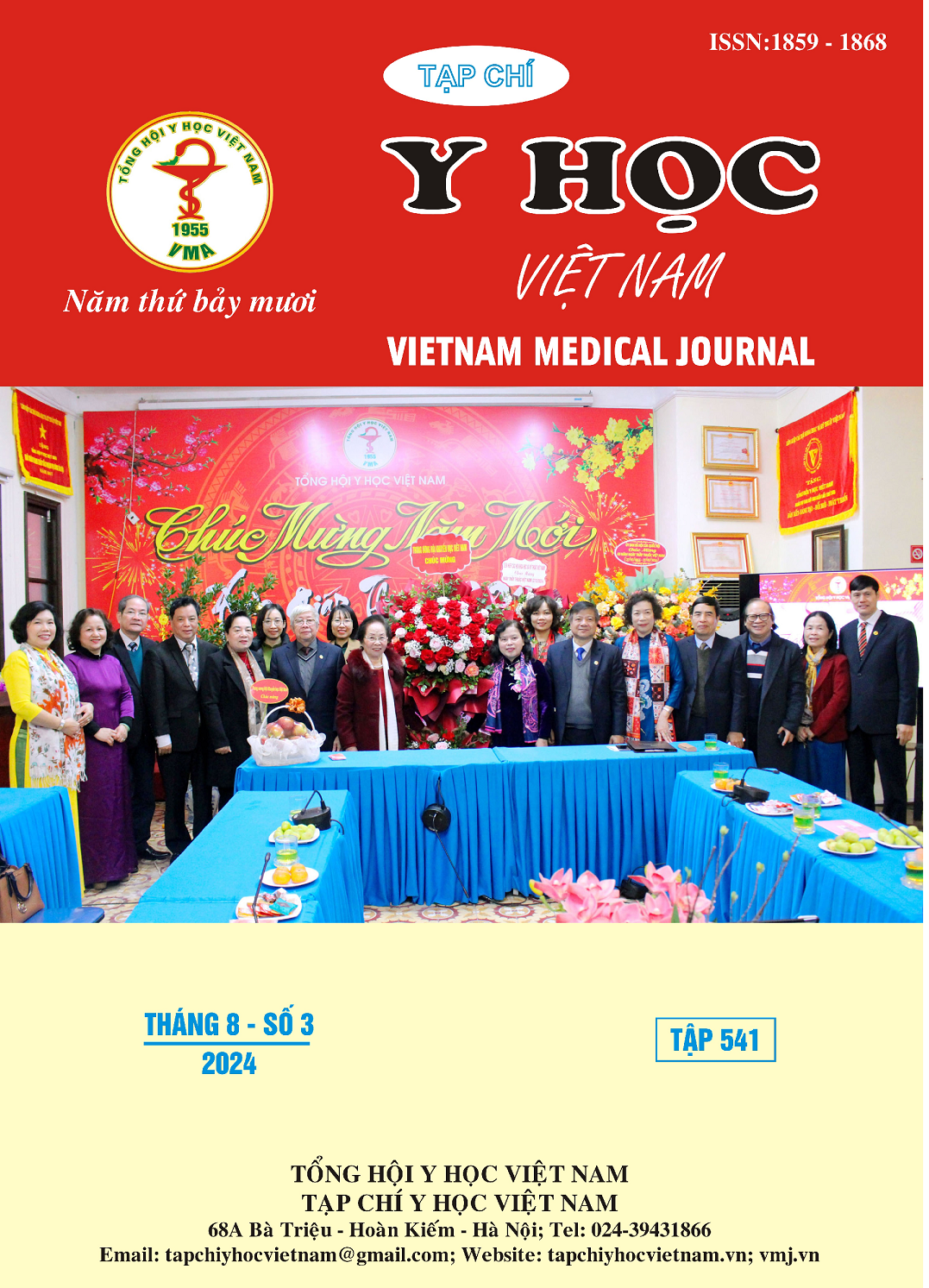OUTCOMES OF ARTHROSCOPIC TREATMENT FOR SUBACROMIAL IMPINGEMENT IN E HOSPITAL
Main Article Content
Abstract
Background: Subacromial impingement syndrome is the most common shoulder pathology syndrome, among the common causes of shoulder pain in middle-aged and elderly people. Indications for acromionoplasty are based on clinical symptoms and are generally supported by typical changes in acromial morphology on standard radiographs. Research objective: Describe the clinical and diagnostic imaging characteristics of patients with subacromial impingement syndrome in the research group. Subjects: Patients with subacromial impingement syndrome were diagnosed and operated by laparoscopic surgery for treatment at hospital E during the period from January 2020 to March 2023. Results: The mean age was 62 ± 7.5 (43-76). The average acromial index in patients with subacromial impingement syndrome is 0.73, the average acromiolateral lateral angle is 74.4 degrees, and the average acromion-humeral head distance is 6.7 mm. Most patients had good and very good results after 1 month of surgery, accounting for 96.4%, with differences in the UCLA scale (the shoulder joint assessment scale of the University of California Los Angeles). Conclusion: Indications for laparoscopic surgery for subacromial impingement syndrome is base on clinical basis. It is a safe, effective, functional, and quality of life improvement method for patients.
Article Details
Keywords
subacromial impingement, laparoscopic surgery.
References
2. Harrison AK, Flatow EL. Subacromial impingement syndrome. JAAOS-J Am Acad Orthop Surg. 2011;19(11):701-708.
3. CHARLES S NEER I. Anterior acromioplasty for the chronic impingement syndrome in the shoulder: a preliminary report. JBJS. 1972;54(1): 41-50.
4. McLaughlin HL. Lesions of the musculotendinous cuff of the shoulder. The exposure and treatment of tears with retraction. 1944. Clin Orthop Relat Res. 1994;(304):3-9.
5. Quang LM, Liên NTK. đánh giá kết quả phục hồi chức năng khớp vai sau phẫu thuật nội soi điều trị hẹp khoang dưới mỏm cùng vai. Tạp Chí Học Việt Nam. 2023;522(1).
6. Calis M, Akgun K, Birtane M, Karacan I, Calis H, Tuzun F. Diagnostic values of clinical diagnostic tests in subacromial impingement syndrome. Ann Rheum Dis. 2000;59(1):44-47. doi:10.1136/ard.59.1.44
7. Bigliani LU, Levine WN. Current concepts review-subacromial impingement syndrome. JBJS. 1997;79(12):1854-1868.
8. Balke M, Schmidt C, Dedy N, Banerjee M, Bouillon B, Liem D. Correlation of acromial morphology with impingement syndrome and rotator cuff tears. Acta Orthop. 2013;84(2):178-183.
9. Yu MY, Zhang W, Zhang DB, Zhang XD, Gu GS. An Anthropometry Study of the Shoulder Region in a Chinese Population and its Correlation with Shoulder Disease. Int J Morphol. 2013;31(2).
10. Li X, Xu W, Hu N, et al. Relationship between acromial morphological variation and


